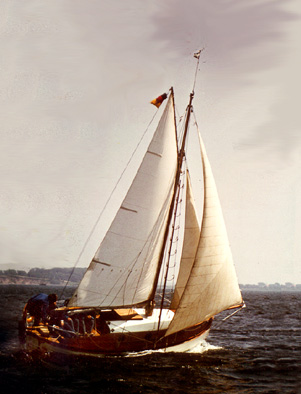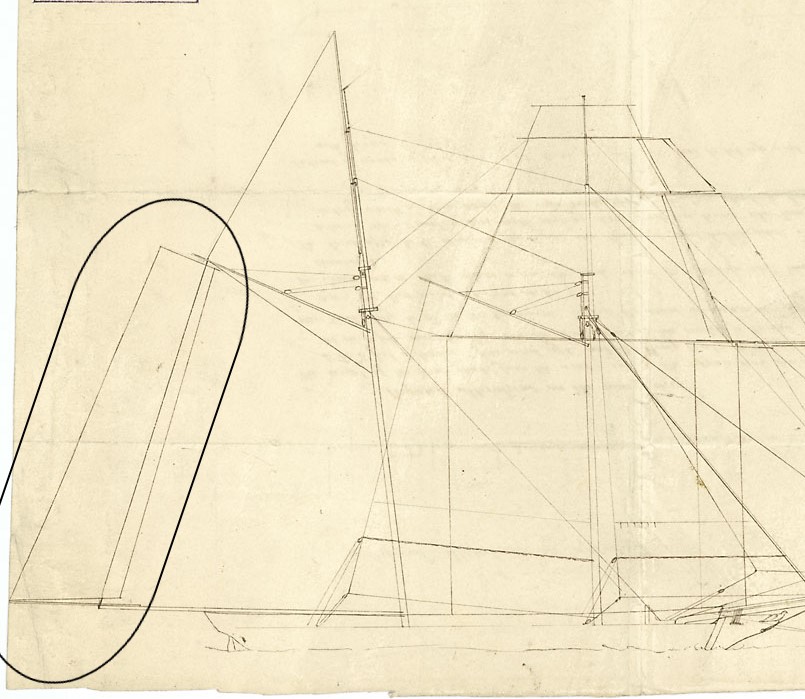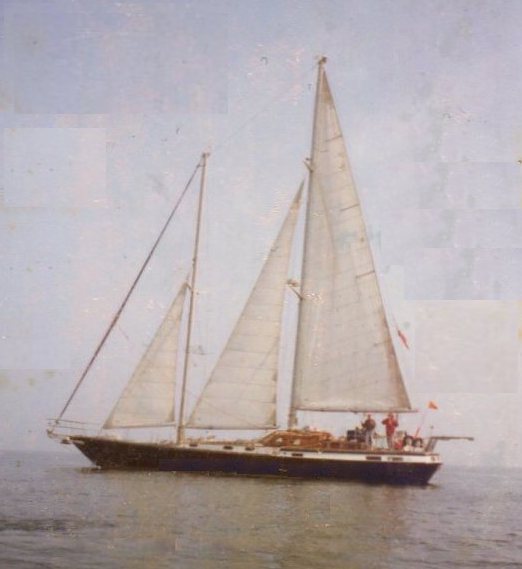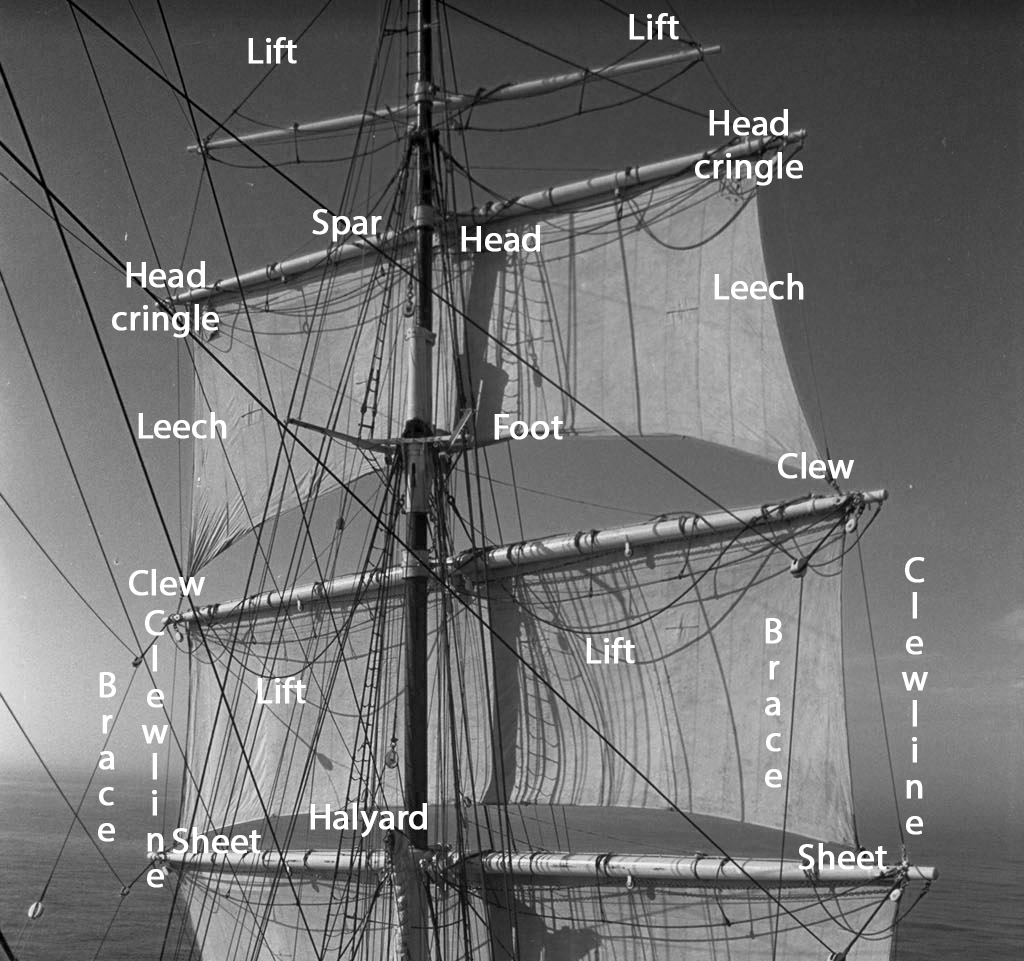|
Cutter (boat)
A cutter is any of various types of watercraft. The term can refer to the sail plan, rig (sail plan) of a sailing vessel (but with regional differences in definition), to a governmental enforcement agency vessel (such as a coast guard or border force cutter), to a type of ship's boat which can be used under sail or oars, or, historically, to a type of fast-sailing vessel introduced in the 18th century, some of which were used as small warships. As a sailing rig, a cutter is a single-masted boat, with two or more headsails. On the eastern side of the Atlantic Ocean, Atlantic, the two headsails on a single mast is the fullest extent of the modern definition. In U.S. waters, a greater level of complexity applies, with the placement of the mast and the rigging details of the bowsprit taken into account so a boat with two headsails may be classed as a sloop. Government agencies use the term "cutter" for vessels employed in patrolling their territorial waters and other enforcement a ... [...More Info...] [...Related Items...] OR: [Wikipedia] [Google] [Baidu] |
Privateer
A privateer is a private person or vessel which engages in commerce raiding under a commission of war. Since robbery under arms was a common aspect of seaborne trade, until the early 19th century all merchant ships carried arms. A sovereign or delegated authority issued commissions, also referred to as letters of marque, during wartime. The commission empowered the holder to carry on all forms of hostility permissible at sea by the usages of war. This included attacking foreign vessels and taking them as prizes and taking crews prisoner for exchange. Captured ships were subject to condemnation and sale under prize law, with the proceeds divided by percentage between the privateer's sponsors, shipowners, captains and crew. A percentage share usually went to the issuer of the commission (i.e. the sovereign). Most colonial powers, as well as other countries, engaged in privateering. Privateering allowed sovereigns to multiply their naval forces at relatively low cost by mobilizi ... [...More Info...] [...Related Items...] OR: [Wikipedia] [Google] [Baidu] |
Studding Sail
A studding sail, or stun'sl (pronounced stuns'l ) is an extra sail on a square rigged vessel for use in fair weather. It is set outside the square sails, using stun'sl booms which run out along the yards. They came into use some time in the middle of the 17th century and by the beginning of the 19th century were usual on all square rigged sailing vessels. They started to become less common in the last quarter of the 19th century, as the economies of smaller crews and avoidance of damage to the ship's gear became more important than a fast voyage. History The origins of studding sails are relatively uncertain. The earliest reference is in 1655, but precise information on how these early examples were rigged is unknown. It is not until 1790 that this is available. Some changes in the detail of design and usage occurred over succeeding years. All ordinary working square-rigged vessels were usually fitted out to set stun'sls by the start of the 19th century. This started to change ... [...More Info...] [...Related Items...] OR: [Wikipedia] [Google] [Baidu] |
Ringtail (sail)
A ringtail a sail which is set abaft (behind) a fore-and-aft sail to increase the total sail area of a sailing vessel in light winds. It may be three or four-sided. Description A ringtail sail may be quadrilateral or triangular in shape. Quadrilateral The older and more common type is a quadrilateral sail set on spars which extend the gaff and boom of a gaff sail Gaff rig is a sailing rig (configuration of sails, mast and stays) in which the sail is four-cornered, fore-and-aft rigged, controlled at its peak and, usually, its entire head by a spar (pole) called the ''gaff''. Because of the size and sh .... The effect is as if the gaff sail were larger in size, with the extra sail cloth of the ringtail continuing the plane in which the gaff sail is set. Triangular The triangular ringtail is set both above and behind a triangular working sail on the mizzen mast, providing extra sail area with minimal crew input, typically on late 19th-century schooners on the Americ ... [...More Info...] [...Related Items...] OR: [Wikipedia] [Google] [Baidu] |
Flying Jib
A jib is a triangular sail that sets ahead of the foremast of a sailing vessel. Its forward corner ( tack) is fixed to the bowsprit, to the bows, or to the deck between the bowsprit and the foremost mast. Jibs and spinnakers are the two main types of headsails on a modern boat. Modern yachts and small craft Boats may be sailed using a jib alone, but more commonly jibs make a minor direct contribution to propulsion compared to a main sail. Generally, a jib's most crucial function is as an airfoil, increasing performance and overall stability by reducing turbulence on the main sail's leeward side. On boats with only one jib, it is common for the clew of the jib to be abaft the mast, meaning the jib and mainsail overlap. An overlapping jib is called a ''genoa jib'' or simply a genoa (see illustration). These are efficiently used when reaching more broadly than a close reach. Alternatively, a boat may carry smaller jibs, to compensate aerodynamics when the main sail is r ... [...More Info...] [...Related Items...] OR: [Wikipedia] [Google] [Baidu] |
Bowsprit
The bowsprit of a sailing vessel is a spar (sailing), spar extending forward from the vessel's prow. The bowsprit is typically held down by a bobstay that counteracts the forces from the forestay, forestays. The bowsprit’s purpose is to create anchor points for the sails that extend beyond the vessel’s bow, increasing the size of sail that may be held taut. The word ''bowsprit'' is thought to originate from the Middle Low German word ''bōchsprēt'' – ''bōch'' meaning "bow" and ''sprēt'' meaning "pole". On some square-rigged ships a Spritsail (square-rigged), spritsail is flown below the bowsprit; these are sometimes accompanied by a sprit topmast, which serves to assist the spritsail while tacking (sailing), tacking. The bowsprit may also be used to hold up the Figurehead (object), figurehead. References External links * {{Sailing ship elements Sailboat components ... [...More Info...] [...Related Items...] OR: [Wikipedia] [Google] [Baidu] |
Forestay
On a sailing vessel, a forestay, sometimes just called a stay, is a piece of standing rigging which keeps a mast from falling backwards. It is attached either at the very top of the mast, or in fractional rigs between about 1/8 and 1/4 from the top of the mast. The other end of the forestay is attached to the bow of the boat. Often a sail is attached to the forestay. This sail may be a jib or a genoa. In a cutter rig, the jib or jibs are flown from stays in front of the forestay, perhaps going from the masthead to a bowsprit. The sail on the forestay is then referred to as the staysail or stays'l. A forestay might be made from stainless steel wire on a modern yacht, solid stainless steel rod, carbon rod, or ultra high molecular weight polyethylene (such as Spectra or Dyneema) on a high-performance racing boat, and galvanised wire or natural fibers on an older cutter or square-rigged ship. See also * Backstay * Shroud (sailing) On a sailing ship, the shrouds are the ... [...More Info...] [...Related Items...] OR: [Wikipedia] [Google] [Baidu] |
Staysail
A staysail ("stays'l") is a fore-and-aft rigged sail whose luff can be affixed to a stay running forward (and most often but not always downwards) from a mast to the deck, the bowsprit, or to another mast. Description Most staysails are triangular; however, some are four-cornered, notably some fisherman's staysails. Triangular staysails set forward of the foremost mast are called jibs, headsails, or foresails. The innermost such sail on a cutter, schooner, and many other rigs having two or more foresails is referred to simply as ''the staysail'', while the others are referred to as jibs, flying jibs, etc. Types of staysail include the tallboy staysail (a narrow staysail carried between the spinnaker and the mainsail on racing yachts), the genoa staysail (a larger one carried inside the spinnaker when broad reaching), and the bigboy staysail (another name for the shooter or blooper, carried on the leeward side of the spinnaker). Unlike the cutter staysail, none of ... [...More Info...] [...Related Items...] OR: [Wikipedia] [Google] [Baidu] |
Roach (sail)
Sail components include the features that define a sail's shape and function, plus its constituent parts from which it is manufactured. A sail may be classified in a variety of ways, including by its orientation to the vessel (e.g. ''fore-and-aft'') and its shape, (e.g. ''(a)symmetrical'', ''triangular'', ''quadrilateral'', etc.). Sails are typically constructed out of flexible material that is shaped by various means, while in use, to offer an appropriate airfoil, according to the strength and apparent direction of the wind. A variety of features and fittings allow the sail to be attached to lines and spars. Whereas conventional sails form an airfoil with one layer of fabric, wingsails comprise a structure that has material on both sides to form an airfoil—much like a wing placed vertically on the vessel—and are beyond the scope of this article. Classifications Sails may be classified as either ''triangular'', which describes sails that either come to one point of suspens ... [...More Info...] [...Related Items...] OR: [Wikipedia] [Google] [Baidu] |
Topgallant Sail
On a square rigged sailing vessel, a topgallant sail (topgallant alone pronounced "t'gallant", topgallant sail pronounced "t'garns'l",C.S. Forester, ''Beat to Quarters'', Chapter VI. is the square-rigged sail or sails immediately above the topsail or topsails. It is also known as a gallant or garrant sail. Later full-rigged ships split the topsail (and often the topgallant sail) for easier handling. They thus set two topsails (and possibly two topgallant sails) per mast. The lower topgallant sail is immediately above the upper topsail. The upper or only topgallant sail is set from the top of the topgallant mast. If there is a lower topgallant it is set from midway down the topgallant mast. A staysail A staysail ("stays'l") is a fore-and-aft rigged sail whose luff can be affixed to a stay running forward (and most often but not always downwards) from a mast to the deck, the bowsprit, or to another mast. Description Most staysails a ... set on a stay running forward ... [...More Info...] [...Related Items...] OR: [Wikipedia] [Google] [Baidu] |
Topsail
A topsail ("tops'l") is a sail set above another sail; on square-rigged vessels further sails may be set above topsails. Square rig On a square rigged vessel, a topsail is a typically trapezoidal shaped sail rigged above the course sail and below the topgallant sail where carried, on any mast (i.e., a fully rigged ship would have a foremast topsail, a mainmast topsail, and a mizzen topsail). A full rigged ship will have either single or double (i.e., "split" upper and lower) topsails on all masts, the single or lower topsail being the second sail above the deck and the upper topsail where so rigged being the third. Although described as a "square" sail, a topsail on a full rigged ship refers not to the sail's shape but to it and its yard being rigged square (i.e., at a right angle) to the vessel's keel rather than in line with it (in which case it would be called a fore-and-aft rig or a fore-and-aft rigged sail) ; a square rigged topsail is nearly always trapezoidal in sha ... [...More Info...] [...Related Items...] OR: [Wikipedia] [Google] [Baidu] |
Course (sail)
In sailing, a course is a type of square rig, square sail. It is the sail set on the lowest Yard (sailing), yard on a mast. The courses are given a name derived from the mast on which they are set, so the course on the foremast may be called the fore-course or the foresail; similarly main-course or mainsail for that carried on the mainmast. On the mizzen, a course is not usually carried. If it is, it is called the crossjack (or cro'jack) or mizzen sail. The lower yard on the mizzen takes the same name (crossjack). When there is no sail set from this yard it is still needed to sheet home the topsail. In that case, a clue to the arrangement is the absence of footropes. References [...More Info...] [...Related Items...] OR: [Wikipedia] [Google] [Baidu] |






